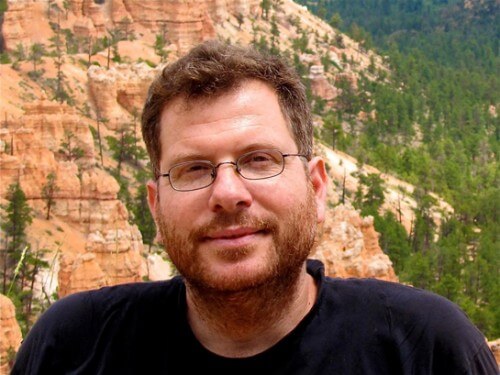The division of cells in any living being is one of the most fundamental and miraculous processes in nature. How does such a process occur with such precision? We asked Dr. Amit Tzur from Bar-Ilan University who is engaged in researching these issues

Two cells at the end of division that are still connected to each other. The two green dots show the active protein in the final separation between the two cells.
The process of cell division (called the cell cycle) is a one-way process with two main steps: the doubling of the genetic load and the division of the cell into two genetically identical daughter cells that will also undergo division. In timing and with analytical precision, the same information remains in the cell and its descendants. Any slight deviation from this precise course would be disastrous. In the worst case for the cell, but good for the organism - the cell will die. In the opposite case - the cell will survive with defects - a process that leads to the development of cancer.
How does such a precise division occur? How do the creatures survive and live for so long?
Tzur: although the cell cycle is a continuous process, the progress in it is made in well-defined stages with checkpoints in between. Proteins are responsible for the fine precision of the timing of the various stages of division. At different stages of the division cycle, different proteins are present at different levels. Protein can be essential at one point and destructive at another. Moreover, many times the disappearance of a certain protein by decomposition is the signal that signals the transition to the next stage, like opening a dam that allows water to pass from one place to another. Before making a dramatic decision such as division, the cell knows how to sense its condition and assess whether it is ready to move to the next stage. Those responsible for sensing the state of the cell and returning it to a normal state if an error occurs in the process, are special proteins called "repair proteins." For example, there are proteins that know how to scan the DNA and correct errors that occurred in it during its duplication. Other proteins make sure that the genetic material is divided between the daughter cells in the same way. In case the cell senses a malfunction, it will stop and try to correct the error. In the case of uncorrectable errors, the cell commits suicide and the errors are not passed on to the next generation. Errors that escape the repair mechanism perpetuate the damage and the cell turns into a cancer cell in most cases. Today it is known that almost all the genes that encode repair proteins of various processes in the cell cycle are involved in cancer.
What is your contribution in the field?
"We are currently investigating how cell division ends, which proteins are involved and how they are controlled. We recently found a protein that is at the point of separation between two cells at the end of division and its level is controlled by a remarkably timed degradation. It seems that the protein is active in the final separation between the two cells at the end of the division, and when its level is not balanced the cells do divide, but are unable to detach. Unbalanced or abnormal cell division has a direct link to cancer, therefore it is not surprising that a link is found between an unbalanced level of this protein and breast cancer."
"Another field in which we deal is the growth control of dividing cells. Dividing cells double their size during their life cycle, so that at the time of division, the size of the cell is twice what it was at birth. This process, called cell growth, also occurs with incredible precision and timing. Since the cells maintain their size from generation to generation, it is likely that the process of division and growth actually "talk" to each other. It has been known for years that in unicellular organisms - for example in yeast, there is an intracellular connection that synchronizes the division mechanism with the growth mechanism."
"In multicellular organisms, the process of division and growth can be controlled separately by signals that originate outside the cell, therefore for years it has been believed that there is no need for an intracellular mechanism that synchronizes the division mechanism with the growth mechanism, similar to the one that exists in unicellular organisms. It is theoretically possible to trace such a mechanism by accurately measuring the size of the cell during its lifetime and calculating the rate of cell growth, but until recently it was not possible to perform these measurements in the cells of multicellular organisms, so this question remained open. In the research we conducted, which combined tools from the fields of cellular biology, computational biology and engineering, we realized that mammalian cells, similar to single-celled creatures, know how to sense their size and accordingly control and schedule the division cycle. Since the size of the cell is so essential to its function and the function of the tissue to which it belongs, maintaining a constant cell size is so critical and hence the importance of this mechanism. This discovery was made as part of my postdoctoral work at Harvard University, and now, in the Department of Life Sciences and the Nanotechnology Center at Bar Ilan University, we are trying to learn how this mechanism works in the cell and what its consequences are for normal and cancerous cells.

One response
exciting